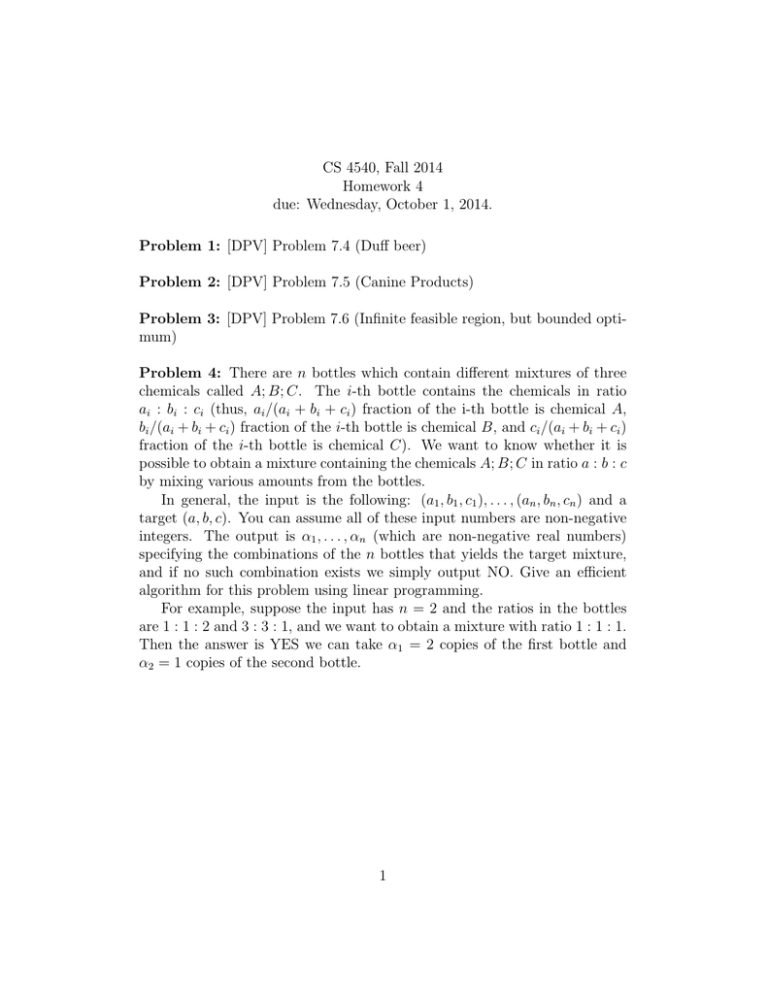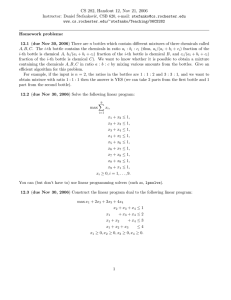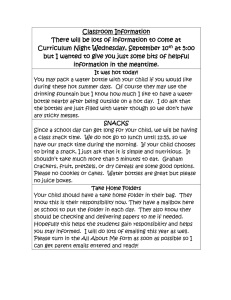CS 4540, Fall 2014 Homework 4 due: Wednesday, October 1, 2014.
advertisement

CS 4540, Fall 2014 Homework 4 due: Wednesday, October 1, 2014. Problem 1: [DPV] Problem 7.4 (Duff beer) Problem 2: [DPV] Problem 7.5 (Canine Products) Problem 3: [DPV] Problem 7.6 (Infinite feasible region, but bounded optimum) Problem 4: There are n bottles which contain different mixtures of three chemicals called A; B; C. The i-th bottle contains the chemicals in ratio ai : bi : ci (thus, ai /(ai + bi + ci ) fraction of the i-th bottle is chemical A, bi /(ai + bi + ci ) fraction of the i-th bottle is chemical B, and ci /(ai + bi + ci ) fraction of the i-th bottle is chemical C). We want to know whether it is possible to obtain a mixture containing the chemicals A; B; C in ratio a : b : c by mixing various amounts from the bottles. In general, the input is the following: (a1 , b1 , c1 ), . . . , (an , bn , cn ) and a target (a, b, c). You can assume all of these input numbers are non-negative integers. The output is α1 , . . . , αn (which are non-negative real numbers) specifying the combinations of the n bottles that yields the target mixture, and if no such combination exists we simply output NO. Give an efficient algorithm for this problem using linear programming. For example, suppose the input has n = 2 and the ratios in the bottles are 1 : 1 : 2 and 3 : 3 : 1, and we want to obtain a mixture with ratio 1 : 1 : 1. Then the answer is YES we can take α1 = 2 copies of the first bottle and α2 = 1 copies of the second bottle. 1





